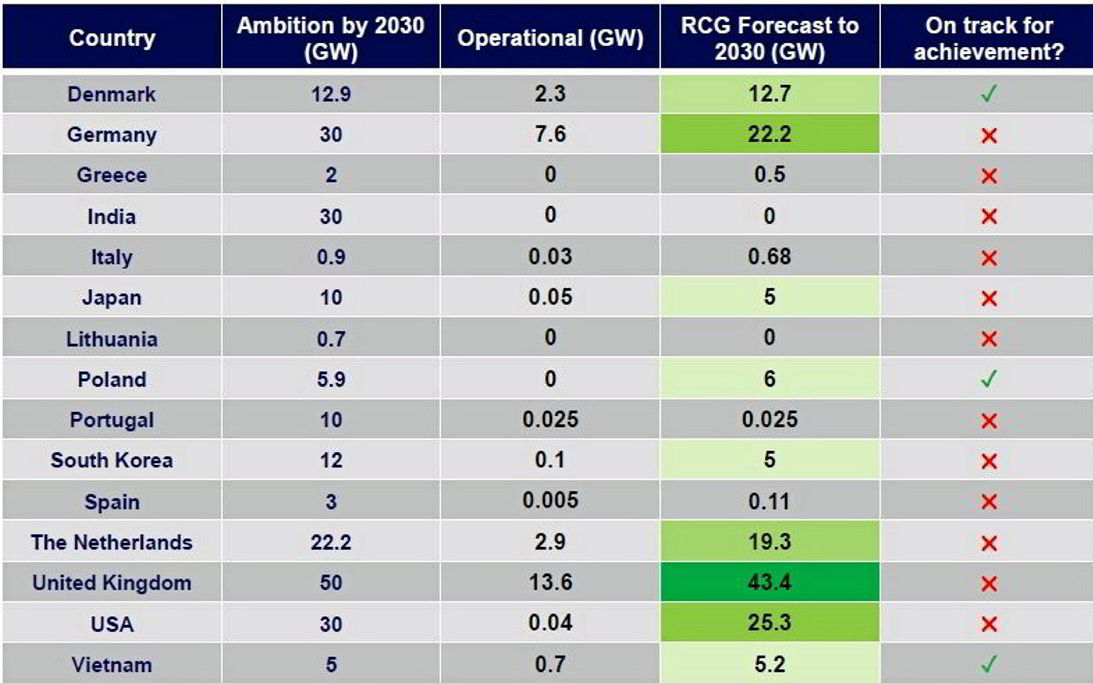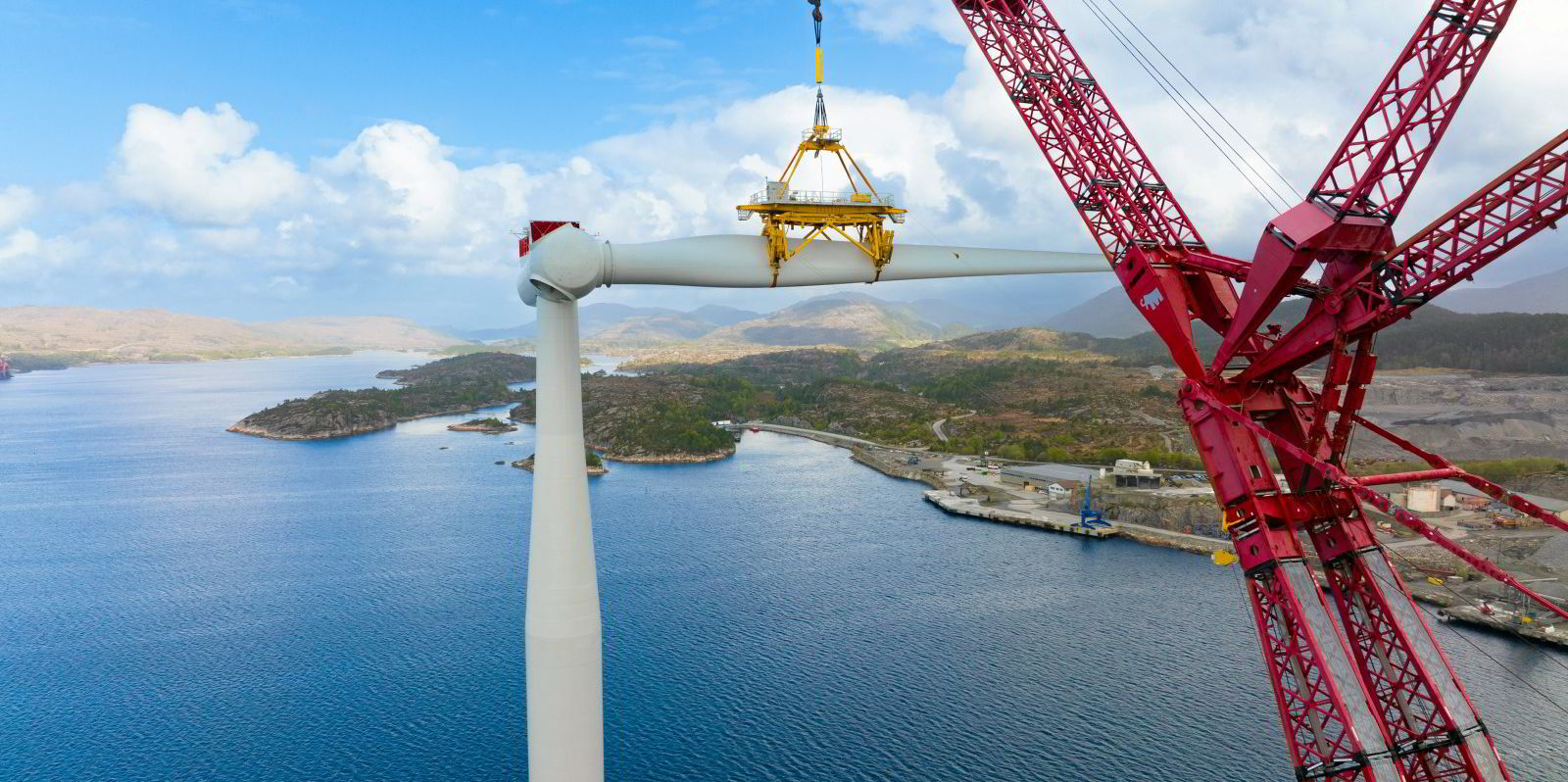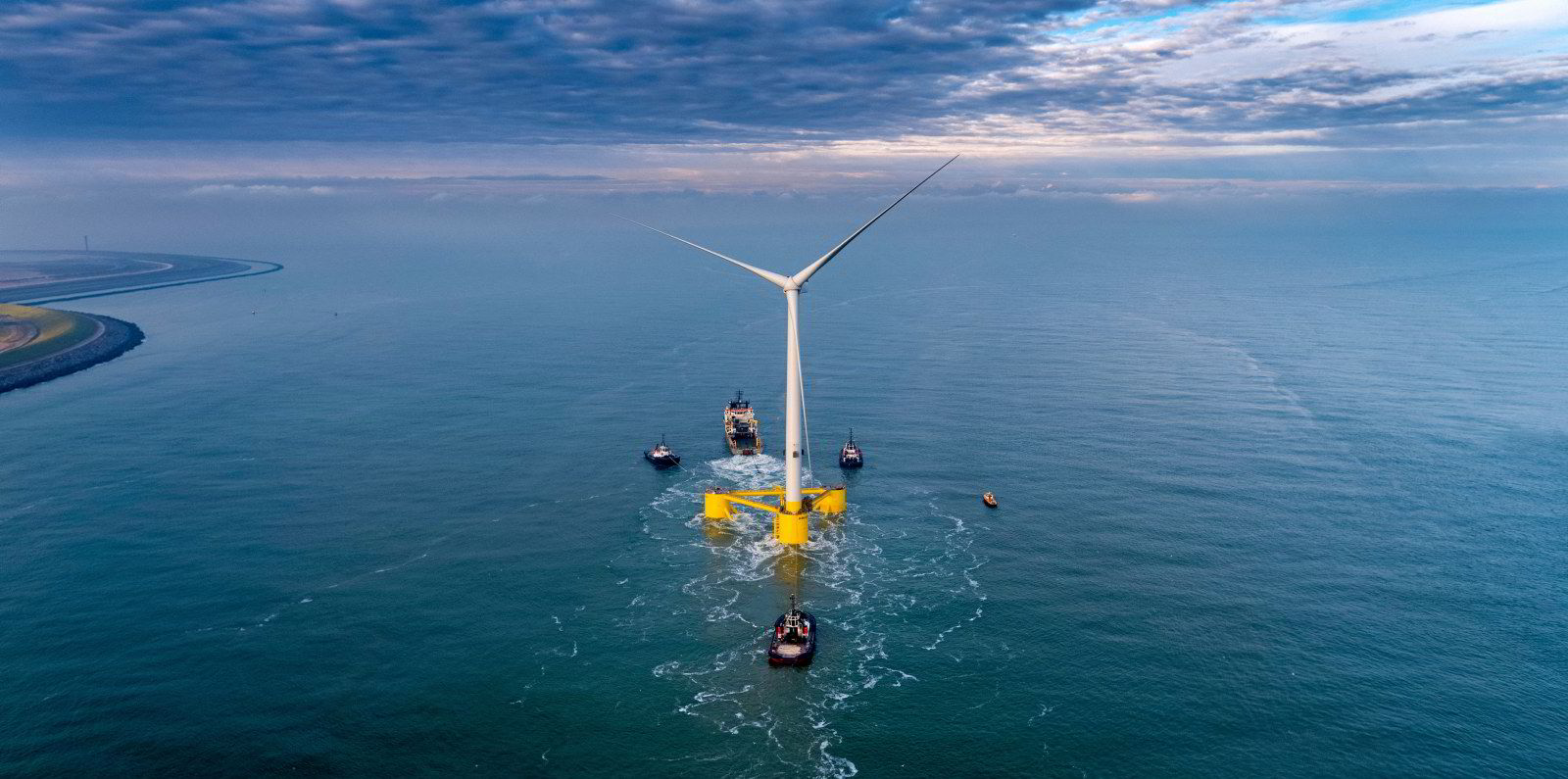Only three of the 15 nations that have set 2030 offshore wind targets are set to meet them, according to a new report that claims barriers such as slow project consenting are putting net zero ambitions at risk.
Vietnam, Poland and Denmark are named by The Renewables Consulting Group (RCG) as the sole markets on track to achieve end-of-decade ambitions (see table at foot).
The consultancy’s latest report released at the start of the COP27 climate summit says the world is already 7% off track to add the level of capacity needed to meet net zero targets – 2,000GW by 2050.
Some large markets such as the UK and US will still add large amounts of capacity despite undershooting their goals, while others will see a total mismatch between ambition and reality – notably India, which the report Global Offshore Wind Market Report: COP 27 Highlights reckons will install zero gigawatts of a 30GW target.
Project consenting times as well as growing economic pressures, supply chain shortages and inadequate grid infrastructure are all named as challenges to accelerated deployment.
Global leader by installed capacity China, which has 24.6GW in place offshore according to RCG, does not have a 2030 target but wants a total 1,000GW installed on land and sea by 2050.
Breanne Gellatly, partner and global lead, strategy and markets for RCG, said: “In spite of the impressive number of offshore wind projects in development, the majority of countries need additional action to hit their 2030 offshore wind specific targets.
“The report should serve as a wake-up call to governments, institutions, and organisations that plenty of challenging work remains in the fight against climate change.”
Markets including the UK – which wants to cut the permitting process to a year – are trying to address the consenting challenge, and RCG recommends the formulation of ‘best practice’ approaches, while offshore wind and grid planning should happen in unison to align investments.
RCG added: “There is a short list of suppliers capable of supplying bankable products to the offshore wind sector. Sustainable profit margins should be maintained while reducing the cost of offshore wind.”




